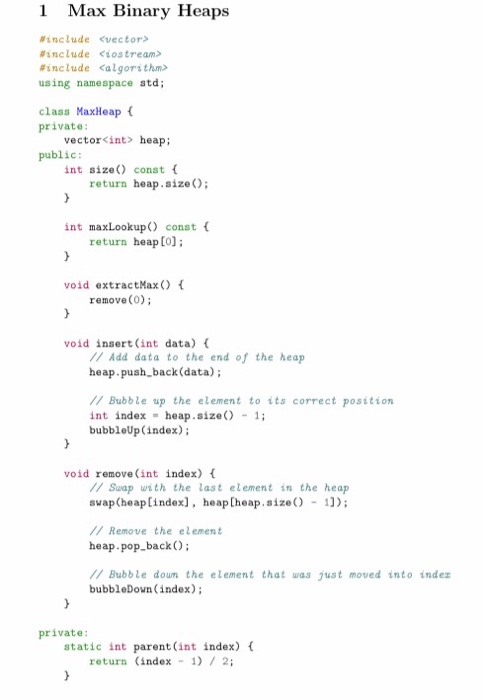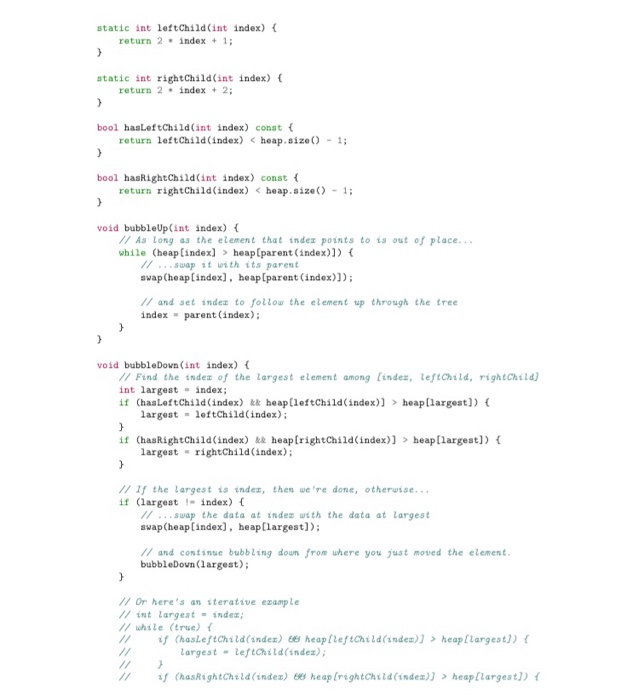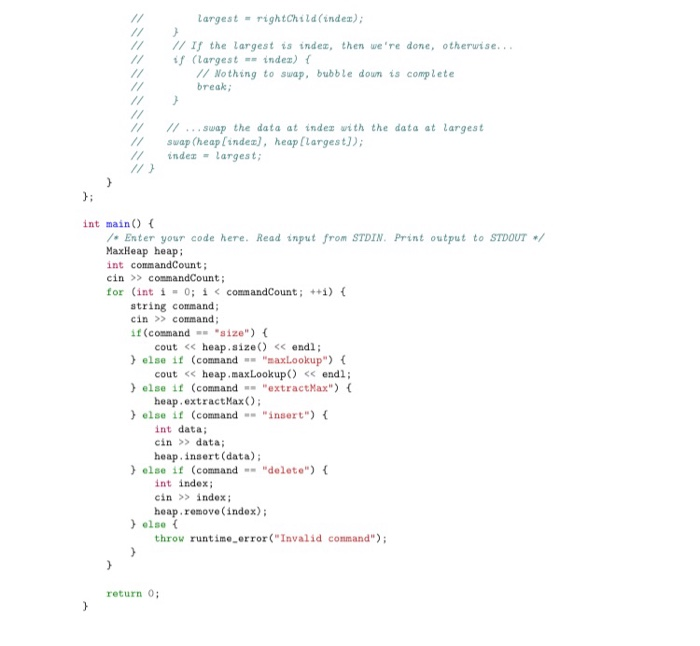Answered step by step
Verified Expert Solution
Question
1 Approved Answer
Determine the best-, worst-, and average-case time complexities of each public method of the MaxHeap class by using a recursion tree. Show work. What is
Determine the best-, worst-, and average-case time complexities of each
public method of the MaxHeap class by using a recursion tree.
Show work.
What is the total space complexity of each public method of the MaxHeap
class? For recursive functions, specify both the implicit and explicit space complexities.



This is C++
1 Max Binary Heaps #include Step by Step Solution
There are 3 Steps involved in it
Step: 1

Get Instant Access to Expert-Tailored Solutions
See step-by-step solutions with expert insights and AI powered tools for academic success
Step: 2

Step: 3

Ace Your Homework with AI
Get the answers you need in no time with our AI-driven, step-by-step assistance
Get Started


